“Give Two!” Apple iPhone 7 and Samsung Galaxy S7 Replicas Review
To buy a copy of the flagship Samsung and Apple smartphones at a price several times smaller than the original is not a problem today. Of course, we were curious about what the fakes of the most advanced pipes really are and how they work.
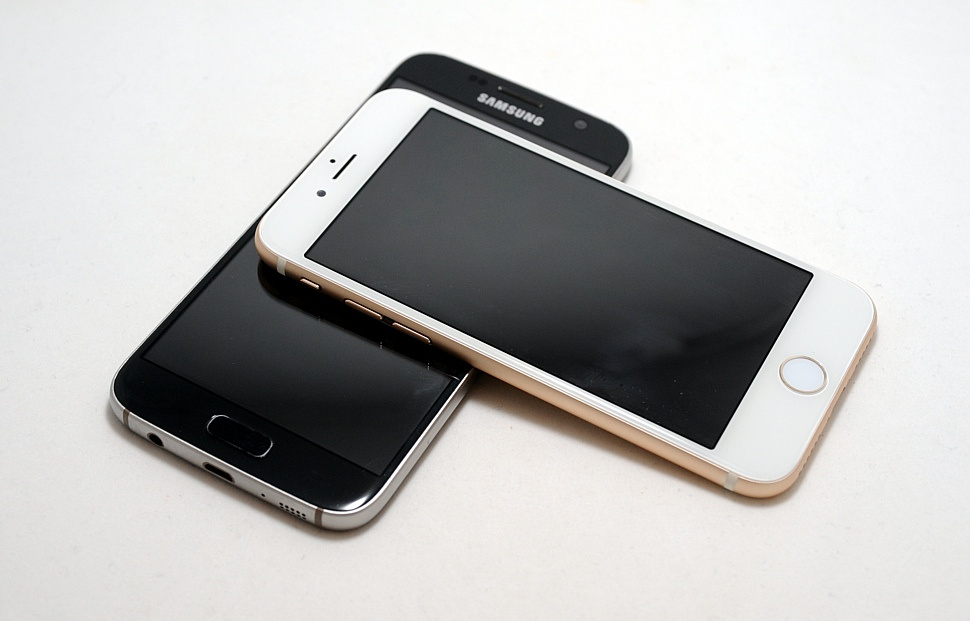
In our hands were the replicas of the iPhone 7 and Galaxy S7, which we will compare not only with the originals, but also among themselves. Let the battle begin!
Even before the start of our narrative, we would like to make a certain disclaimer (written disclaimer) - a written disclaimer for the possible consequences of an action as a result of the actions of the person who declared the refusal or of third parties - namely: we do not campaign for the purchase of replicas of famous brands, moreover, we stand only for the original, "white" devices with a guarantee, however, to deny the fact that they are sold pretty often is senseless. So why not consider replicas more closely to make sure that “identical to natural” is not what we need?
')
The main feature of our today's guests, of course, is the external similarity with the top smartphones. But the identity of the outside does not speak about the similarity inside. Therefore, we first go through the appearance of the gadgets, and then try to taste their stuffing - both hardware and software.
And with a hardware filling, a surprise was waiting for us. The Chinese have tried to falsify her too, and in such a way that not every system utility has noticed this!
Let's start with the "apple" products. To begin with, we showed our colleagues two smartphones and asked to select the original. Voices are divided roughly in half. Interestingly, people saw in the original even what was not there, and noted the advantages of the copy, including the button.
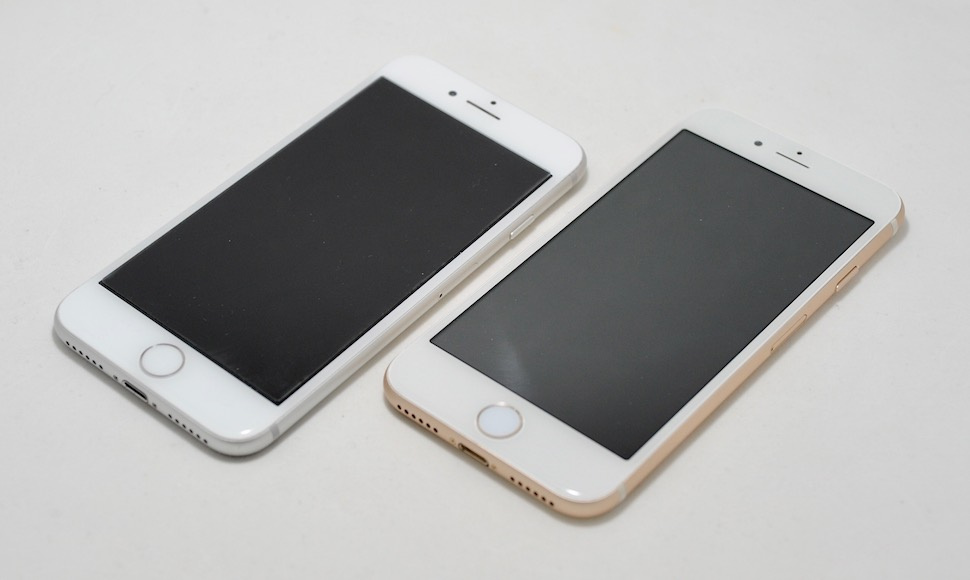
The external similarity of our exhibit (golden in the photo) with the original (silver) is really very high in all respects - from dimensions and weight to materials and assembly. The shape of the monoblock body is familiar, the components are of quite high quality (covers from the original device are expected to fit).

The elements are made with high quality, the assembly is not satisfactory: it does not creak or backlash anything even when squeezed. Yes, our copy is probably not protected from moisture and dust by the established standards, but we didn’t test this usage scenario in practice.
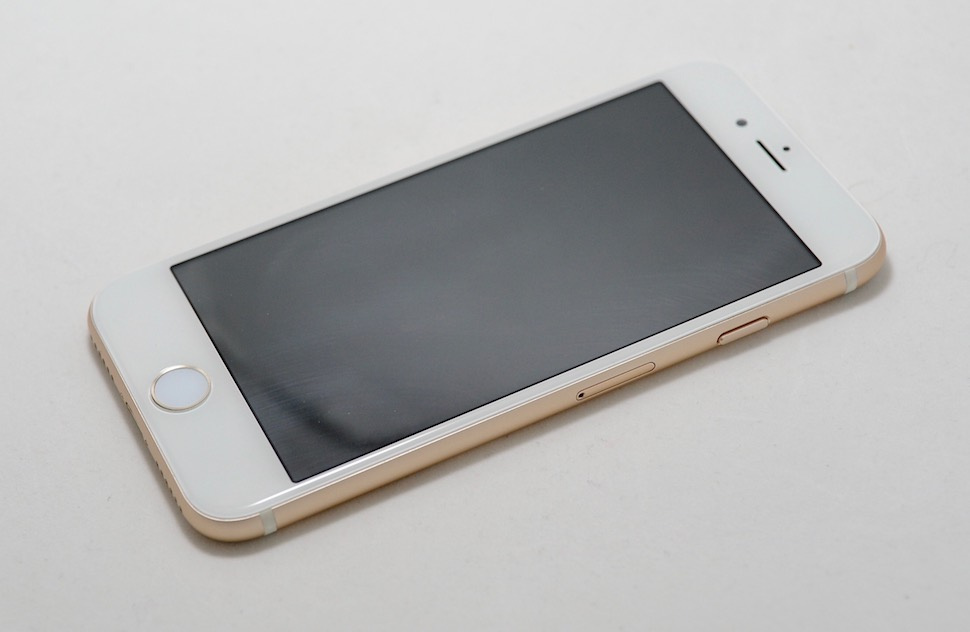
The dominant feature of the front panel is a 4.7 inch display. Of course, this is not a Retina. The grain is visible to the naked eye (the resolution is only 1136 x 640 pixels with a density of 230 dpi), and the picture faded noticeably in the sun.

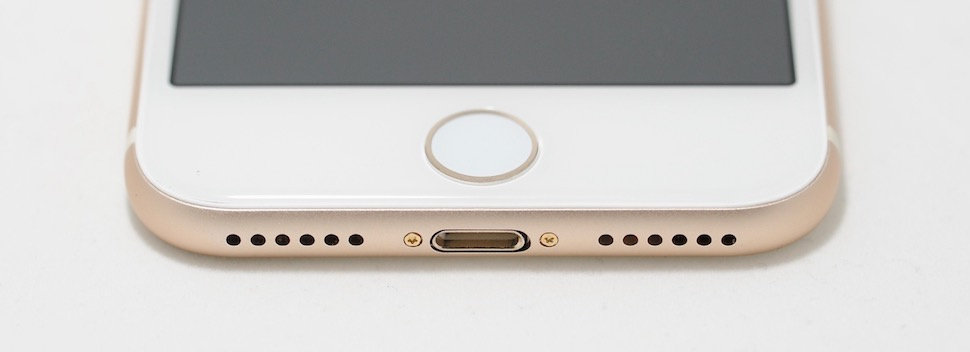
At the bottom of the mechanical key with an imitation of Touch ID and, unlike the original, it has a mechanical stroke when pressed. The upper part of the front panel is reserved for the horizontal slot of the conversational speaker, the proximity sensor and the front camera.
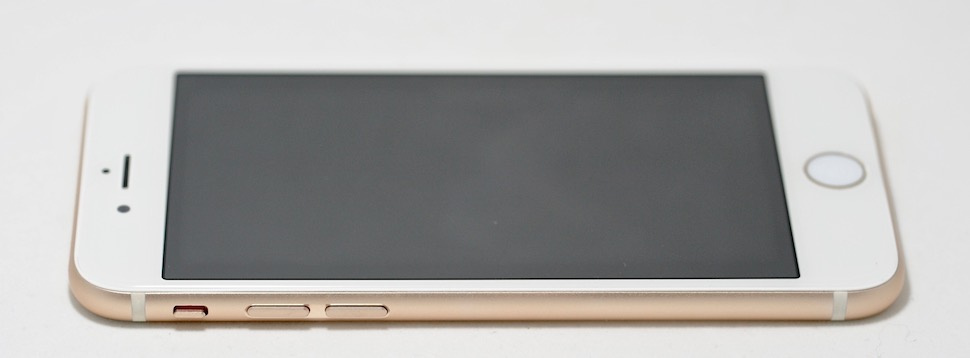
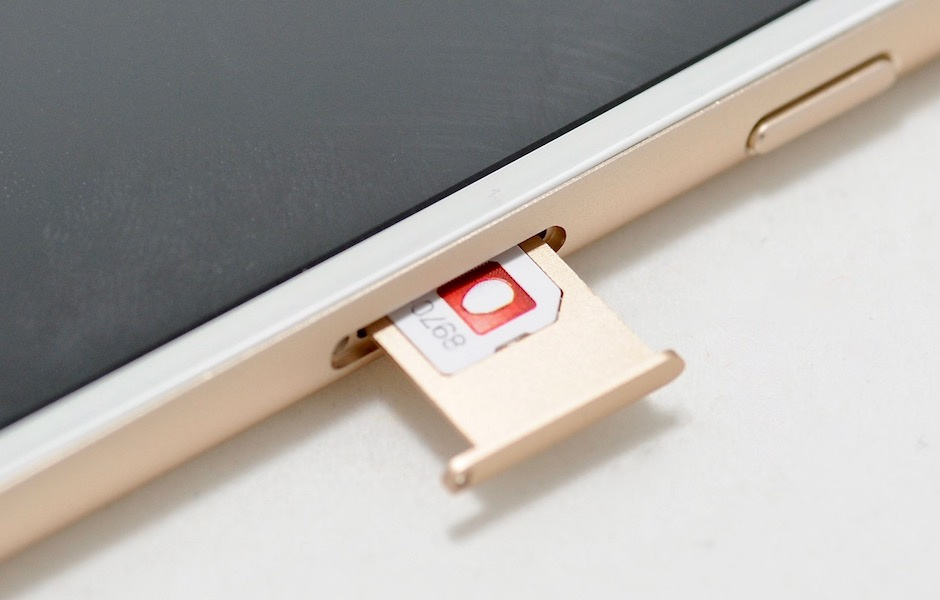
Separated volume keys and a mute slider were placed on the left rounded end of the case, while the right one occupied the power key and the sled compartment under the nano-SIM.

The upper end is devoid of functional elements, on the lower end there is a Lightning-connector surrounded by mounting bolts and openings of the loudspeaker calls. In general, everything is like the original.
The back panel of the case is very laconic: in addition to inserting the bitten apple and service symbols, you can see here the convex lens of the rear camera, the microphone-noise and the flash LED.
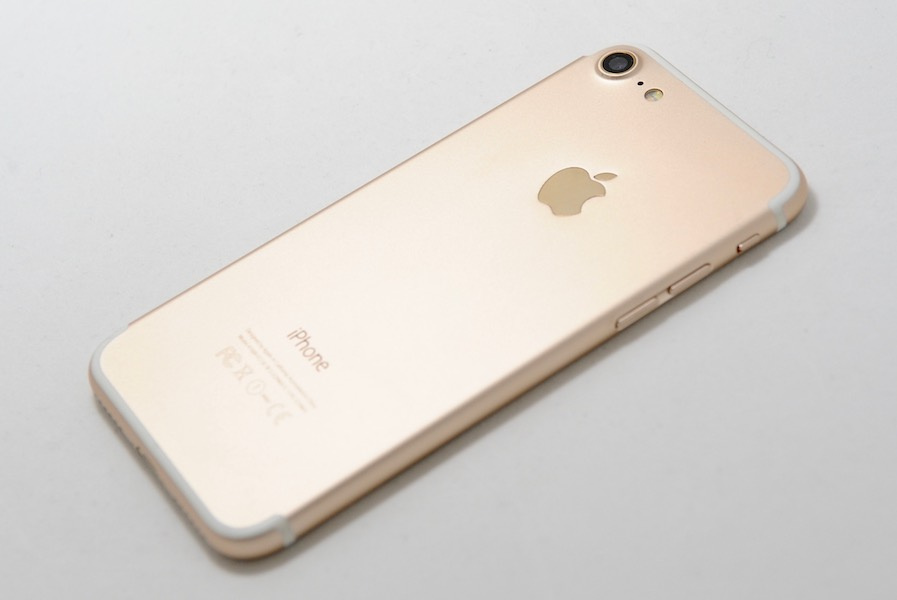

The model case is not collapsible, and the user does not have access to the battery.
In the off state, our fake Galaxy S7 is quite reminiscent of its inimitable fellow. Judge for yourself: metal, but it really is such, the frame of the case with streaks of antennas, in front is a protective glass, and behind it is a curved dark blue glossy plastic.

Upon closer inspection, it becomes clear that the plastic is somewhat cheaper than the original one, and there is some discrepancy in the notation fonts. The assembly at first glance is of high quality, although there are small gaps between the parts, although in general nothing backlash or creaks.

The main element of the front panel is a large display with a thin border frame. The matrix is 5.1 inches with a resolution of 1280 x 720 pixels and a density of 290 dpi. The picture is juicy, but not perfect, and the display is expected to go blind in the sun.
Below, there is a multifunctional hardware key surrounded by the touch counterparts, and on top is a conversational speaker, covered with a metal plate in the vicinity of the front camera and proximity sensor.
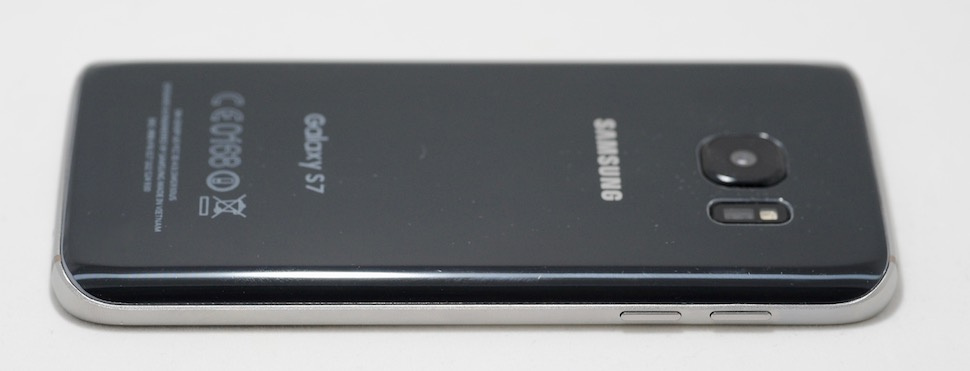
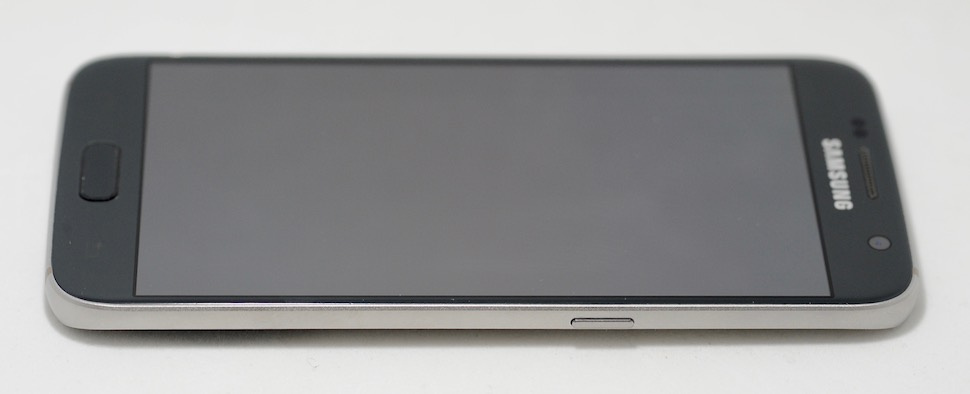
The left end is given to separate volume keys, and the right - under the power key.
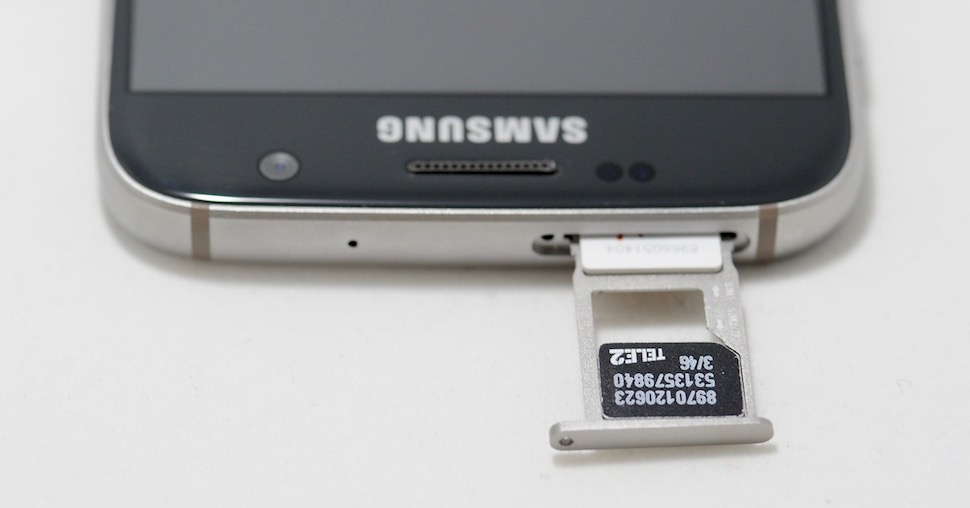

The upper end of the case has a microphone hole-noise and a hybrid SIM / microSD tray, and the lower one has a speaker, microphone, micro-USB and 3.5-mm mini-jack holes. As they say, everything is in place.
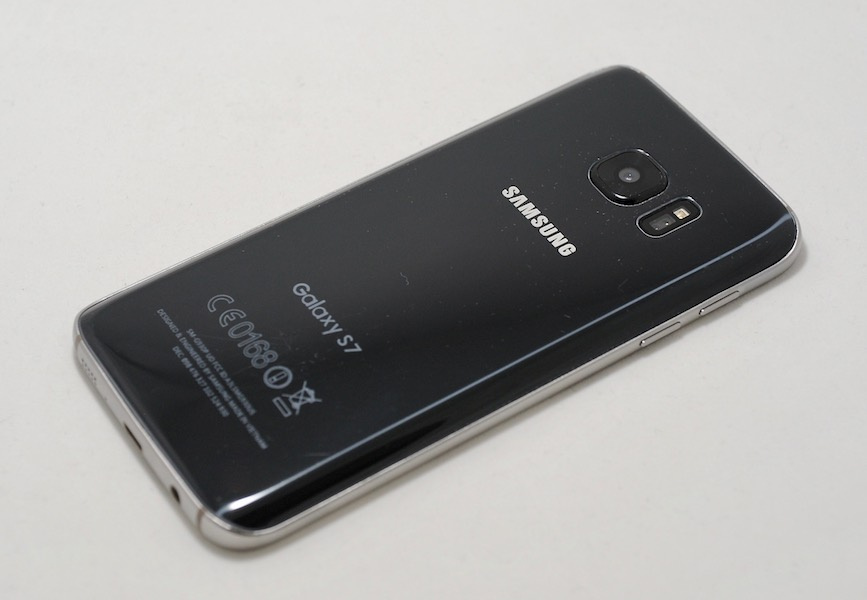
On the back panel, in addition to the above inscriptions, there is a protruding lens of the rear camera, as well as to its right a flash LED.
The case is not collapsible, which is why the user does not have direct access to the battery. The similarity with the original S7 is extremely accurate.
The Apple package is minimalistic: in addition to the device itself, there is a network charger, a USB cable and a clip for removing the SIM card tray in a white and not very informative box.
In the black velvety Samsung box, in addition to the device itself and the manuals, you will find a network charger, a USB cable and a wired stereo headset.
The hardware characteristics of smartphones were not very difficult to pull out to the surface with various utilities, and the picture presented to our eyes deserves a separate taste.

Let's start with the fact that both chips are based on the Cortex-A7, the oldest and slowest cores for today, performed by MediaTek. In order to solve the problem of speed, in “Apple” the manufacturer seems to have gone to extreme measures, called overclocking. Otherwise, it is difficult to explain why the computational cores in peak "finish off" up to 2 GHz.
In the “like Samsung” chip, though more recent, it also has four Cortex-A7 cores working at its own 1.3 GHz frequency. But there is a funny moment - in some cases, the SoC is identified as a Qualcomm Snapdragon 820, which was actually installed in some parts of the original Galaxy S7. In general, as if everything is “for real”.
The second absurdity is the amount of RAM. Virtually all utilities, including help on the system, AnTuTu and others, "talk" about 4 GB in that and another smartphone. But this is fake. According to MediaTek specifications, both chips support no more than 2 GB. And so much is installed in them. Moreover, of the entire set of utilities, only CPU-Z “doubted”. And it is noticeable that the cunning Chinese in some places and she was misled.
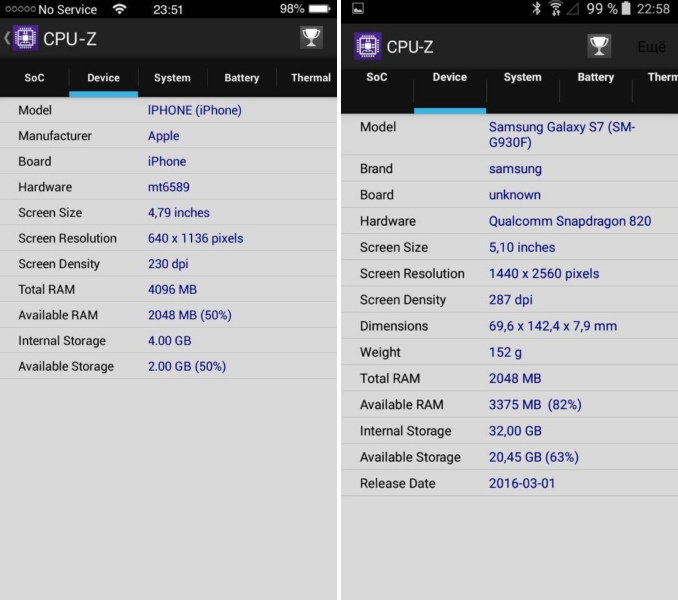
In general, both smartphones launch the base software normally, but just go beyond the boundaries - they start to think. Therefore, we proceed to simple tests.
And in order to determine the difference between them and the originals, we launched the AnTuTu and GeekBench 3 tests (GeekBench 4 refused to work for them).
It is seen that the copies to the originals - as to the heavens. In addition, “as if the iPhone” is inferior “as if the Samasung”, and their results generally correspond to those of these SoCs in other models of smartphones, with the exception of the AnTuTu integrated test.
The software of both “handsets” is, of course, Android. An open and flexible operating system is now installed in many gadgets, including TVs, so why not customize its appearance under the shell of brands that our today's guests so skillfully repeat.

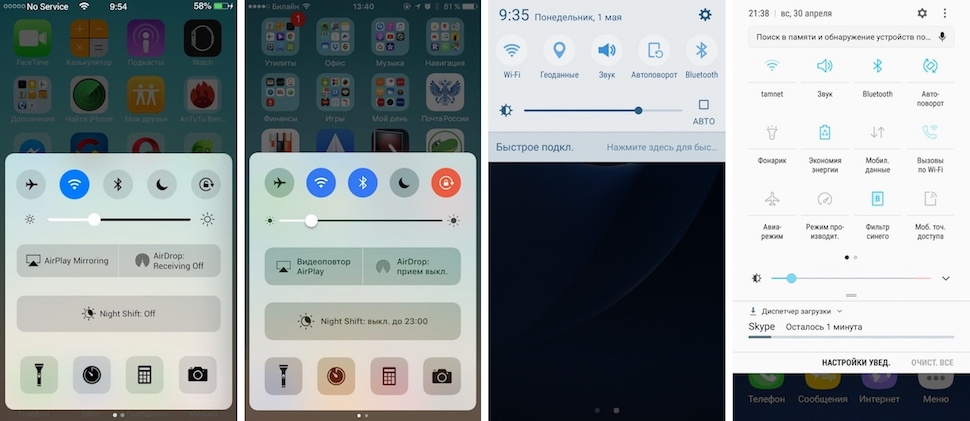
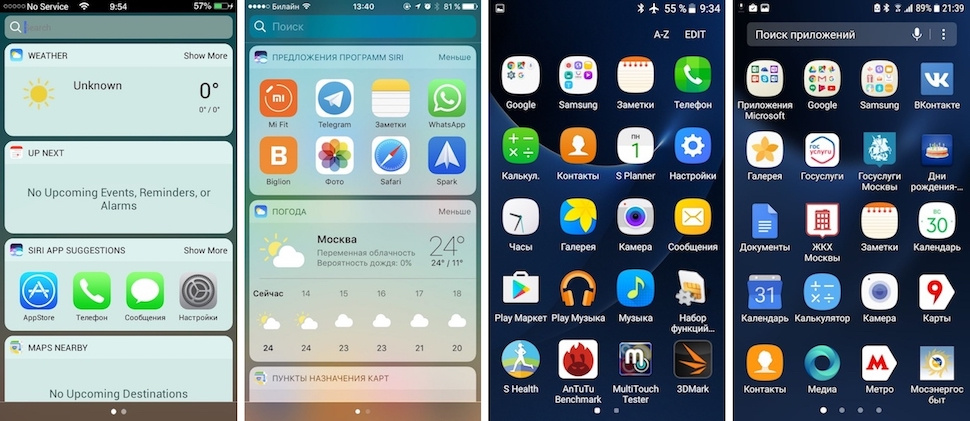
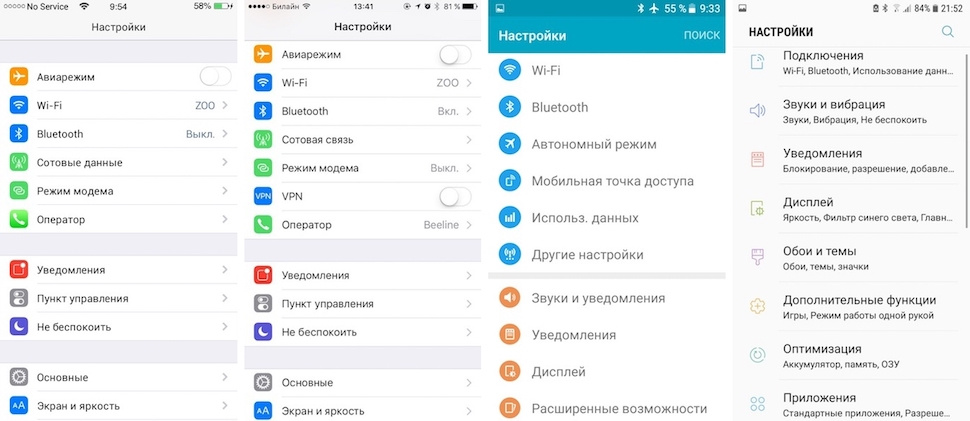
Screenshots from left to right: iPhone replica / original, Samsung replica / original
Superstructures are made qualitatively right up to fonts and branded chips, but an inquisitive glance can find various inconsistencies, and this is generally understandable: we are dealing with imitation, not copying outright, which is generally not very possible in the logic of this OS. In the process, there is some negligence in performance.
The camera software, as well as the skin interface, is as close as possible to the originals. The modules themselves do not compete with their counterparts. Their purpose is the physical presence on the body panel and the ability to start from the menu.
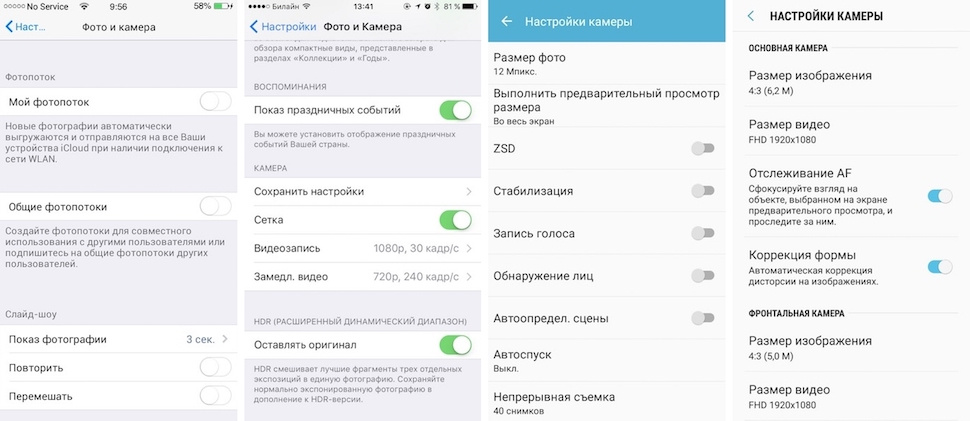
For the rest, we think, test shots will be much more eloquent than words. In short, the “iPhone” is strong in landscapes, and “Samsung” in macro, and that’s it.
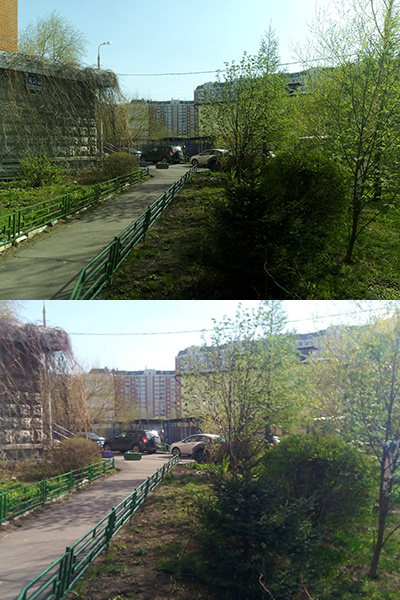
Above - like the iPhone, below - like the Samsung

Above - like the iPhone, below - like the Samsung

On the left - as if Samsung, on the right - as if iPhone
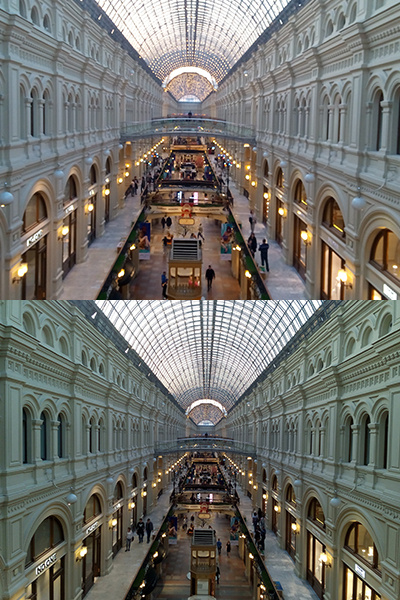
Above - like Samsung, below - like iPhone
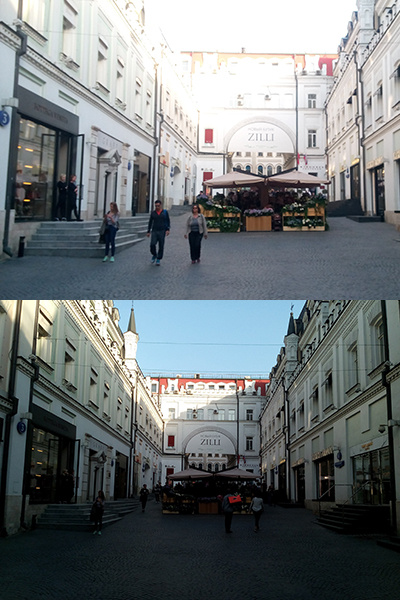
Above - like Samsung, below - like iPhone
So, we have two extremely accurate external copies of the Apple iPhone 7 and Samsung Galaxy S7. Software shells are also a good copy of the interfaces of the above grants. But the filling is very cheap: four core Cortex-A7 and two gigabytes of memory. A reduction by a step of any of these parameters would inevitably lead to noticeable slowdowns. And it seems that everything works smoothly - if you do not run resource-intensive applications.
It is noteworthy that manufacturers tried to forge and stuffing, or rather its identifiers. That only costs MT6580, which in one of the identification lines responds as Qualcomm Snapdragon 820. Or two gigabytes of RAM, which try to seem four. In general, fakes turned out to be complete, but quite working fakes. On the other hand, for the same money you can buy much better and technically advanced solutions. True, do not pretend to famous brands.
In comparison, the fakes won "Samsung", which in terms of stuffing steeper "iPhone" in almost everything.

In our hands were the replicas of the iPhone 7 and Galaxy S7, which we will compare not only with the originals, but also among themselves. Let the battle begin!
Even before the start of our narrative, we would like to make a certain disclaimer (written disclaimer) - a written disclaimer for the possible consequences of an action as a result of the actions of the person who declared the refusal or of third parties - namely: we do not campaign for the purchase of replicas of famous brands, moreover, we stand only for the original, "white" devices with a guarantee, however, to deny the fact that they are sold pretty often is senseless. So why not consider replicas more closely to make sure that “identical to natural” is not what we need?
')
What's the trick
The main feature of our today's guests, of course, is the external similarity with the top smartphones. But the identity of the outside does not speak about the similarity inside. Therefore, we first go through the appearance of the gadgets, and then try to taste their stuffing - both hardware and software.
And with a hardware filling, a surprise was waiting for us. The Chinese have tried to falsify her too, and in such a way that not every system utility has noticed this!
Appearance
How would "iPhone"
Let's start with the "apple" products. To begin with, we showed our colleagues two smartphones and asked to select the original. Voices are divided roughly in half. Interestingly, people saw in the original even what was not there, and noted the advantages of the copy, including the button.

The external similarity of our exhibit (golden in the photo) with the original (silver) is really very high in all respects - from dimensions and weight to materials and assembly. The shape of the monoblock body is familiar, the components are of quite high quality (covers from the original device are expected to fit).

The elements are made with high quality, the assembly is not satisfactory: it does not creak or backlash anything even when squeezed. Yes, our copy is probably not protected from moisture and dust by the established standards, but we didn’t test this usage scenario in practice.

The dominant feature of the front panel is a 4.7 inch display. Of course, this is not a Retina. The grain is visible to the naked eye (the resolution is only 1136 x 640 pixels with a density of 230 dpi), and the picture faded noticeably in the sun.


At the bottom of the mechanical key with an imitation of Touch ID and, unlike the original, it has a mechanical stroke when pressed. The upper part of the front panel is reserved for the horizontal slot of the conversational speaker, the proximity sensor and the front camera.


Separated volume keys and a mute slider were placed on the left rounded end of the case, while the right one occupied the power key and the sled compartment under the nano-SIM.

The upper end is devoid of functional elements, on the lower end there is a Lightning-connector surrounded by mounting bolts and openings of the loudspeaker calls. In general, everything is like the original.
The back panel of the case is very laconic: in addition to inserting the bitten apple and service symbols, you can see here the convex lens of the rear camera, the microphone-noise and the flash LED.


The model case is not collapsible, and the user does not have access to the battery.
How would "Samsung"
In the off state, our fake Galaxy S7 is quite reminiscent of its inimitable fellow. Judge for yourself: metal, but it really is such, the frame of the case with streaks of antennas, in front is a protective glass, and behind it is a curved dark blue glossy plastic.

Upon closer inspection, it becomes clear that the plastic is somewhat cheaper than the original one, and there is some discrepancy in the notation fonts. The assembly at first glance is of high quality, although there are small gaps between the parts, although in general nothing backlash or creaks.

The main element of the front panel is a large display with a thin border frame. The matrix is 5.1 inches with a resolution of 1280 x 720 pixels and a density of 290 dpi. The picture is juicy, but not perfect, and the display is expected to go blind in the sun.
Below, there is a multifunctional hardware key surrounded by the touch counterparts, and on top is a conversational speaker, covered with a metal plate in the vicinity of the front camera and proximity sensor.


The left end is given to separate volume keys, and the right - under the power key.


The upper end of the case has a microphone hole-noise and a hybrid SIM / microSD tray, and the lower one has a speaker, microphone, micro-USB and 3.5-mm mini-jack holes. As they say, everything is in place.

On the back panel, in addition to the above inscriptions, there is a protruding lens of the rear camera, as well as to its right a flash LED.
The case is not collapsible, which is why the user does not have direct access to the battery. The similarity with the original S7 is extremely accurate.
Specifications and scope of delivery
The Apple package is minimalistic: in addition to the device itself, there is a network charger, a USB cable and a clip for removing the SIM card tray in a white and not very informative box.
In the black velvety Samsung box, in addition to the device itself and the manuals, you will find a network charger, a USB cable and a wired stereo headset.
| Apple iPhone 7 Replica | Samsung Galaxy S7 Replica | |
| Type of | Smartphone | Smartphone |
| operating system | Android 4.2.2 | Android 6.0.1 |
| Display | 4.7 ", 1136 x 640 pixels, 230 dpi | 5.1 ", 1280 x 720 pixels, 320 dpi |
| CPU | MT6589, 2000 MHz, 4 core Cortex A7 | MT6580, 1300 MHz, 4 core Cortex A7 |
| Ram | 4 GB | 4 GB |
| Flash | 64 GB | 32 GB + microSD |
| Camera | Rear: 8 megapixel, autofocus, flash; Front: 2.1 MP | Rear: 13 megapixel, autofocus, flash; Front: 5 megapixel |
| Dimensions | 138.3 x 67.1 x 7.1 mm, 144 g | 142.4 x 69.6 x 7.9 mm, 145 g |
The hardware characteristics of smartphones were not very difficult to pull out to the surface with various utilities, and the picture presented to our eyes deserves a separate taste.

Let's start with the fact that both chips are based on the Cortex-A7, the oldest and slowest cores for today, performed by MediaTek. In order to solve the problem of speed, in “Apple” the manufacturer seems to have gone to extreme measures, called overclocking. Otherwise, it is difficult to explain why the computational cores in peak "finish off" up to 2 GHz.
In the “like Samsung” chip, though more recent, it also has four Cortex-A7 cores working at its own 1.3 GHz frequency. But there is a funny moment - in some cases, the SoC is identified as a Qualcomm Snapdragon 820, which was actually installed in some parts of the original Galaxy S7. In general, as if everything is “for real”.
The second absurdity is the amount of RAM. Virtually all utilities, including help on the system, AnTuTu and others, "talk" about 4 GB in that and another smartphone. But this is fake. According to MediaTek specifications, both chips support no more than 2 GB. And so much is installed in them. Moreover, of the entire set of utilities, only CPU-Z “doubted”. And it is noticeable that the cunning Chinese in some places and she was misled.

In general, both smartphones launch the base software normally, but just go beyond the boundaries - they start to think. Therefore, we proceed to simple tests.
Tests
And in order to determine the difference between them and the originals, we launched the AnTuTu and GeekBench 3 tests (GeekBench 4 refused to work for them).
| iPhone 7 | "IPhone 7" | Galaxy S7 | Galaxy S7 | |
| AnTuTu Benchmark | 130235 | 11628 | 101285 | 23487 |
| Geekbench Single-Core | 3469 | 345 | 2120 | 422 |
| Geekbench Multi-Core | 5956 | 1099 | 6438 | 1192 |
It is seen that the copies to the originals - as to the heavens. In addition, “as if the iPhone” is inferior “as if the Samasung”, and their results generally correspond to those of these SoCs in other models of smartphones, with the exception of the AnTuTu integrated test.
Software and interface
The software of both “handsets” is, of course, Android. An open and flexible operating system is now installed in many gadgets, including TVs, so why not customize its appearance under the shell of brands that our today's guests so skillfully repeat.




Screenshots from left to right: iPhone replica / original, Samsung replica / original
Superstructures are made qualitatively right up to fonts and branded chips, but an inquisitive glance can find various inconsistencies, and this is generally understandable: we are dealing with imitation, not copying outright, which is generally not very possible in the logic of this OS. In the process, there is some negligence in performance.
Camera
The camera software, as well as the skin interface, is as close as possible to the originals. The modules themselves do not compete with their counterparts. Their purpose is the physical presence on the body panel and the ability to start from the menu.

For the rest, we think, test shots will be much more eloquent than words. In short, the “iPhone” is strong in landscapes, and “Samsung” in macro, and that’s it.

Above - like the iPhone, below - like the Samsung

Above - like the iPhone, below - like the Samsung

On the left - as if Samsung, on the right - as if iPhone

Above - like Samsung, below - like iPhone

Above - like Samsung, below - like iPhone
Total
So, we have two extremely accurate external copies of the Apple iPhone 7 and Samsung Galaxy S7. Software shells are also a good copy of the interfaces of the above grants. But the filling is very cheap: four core Cortex-A7 and two gigabytes of memory. A reduction by a step of any of these parameters would inevitably lead to noticeable slowdowns. And it seems that everything works smoothly - if you do not run resource-intensive applications.
It is noteworthy that manufacturers tried to forge and stuffing, or rather its identifiers. That only costs MT6580, which in one of the identification lines responds as Qualcomm Snapdragon 820. Or two gigabytes of RAM, which try to seem four. In general, fakes turned out to be complete, but quite working fakes. On the other hand, for the same money you can buy much better and technically advanced solutions. True, do not pretend to famous brands.
In comparison, the fakes won "Samsung", which in terms of stuffing steeper "iPhone" in almost everything.
Source: https://habr.com/ru/post/404023/
All Articles